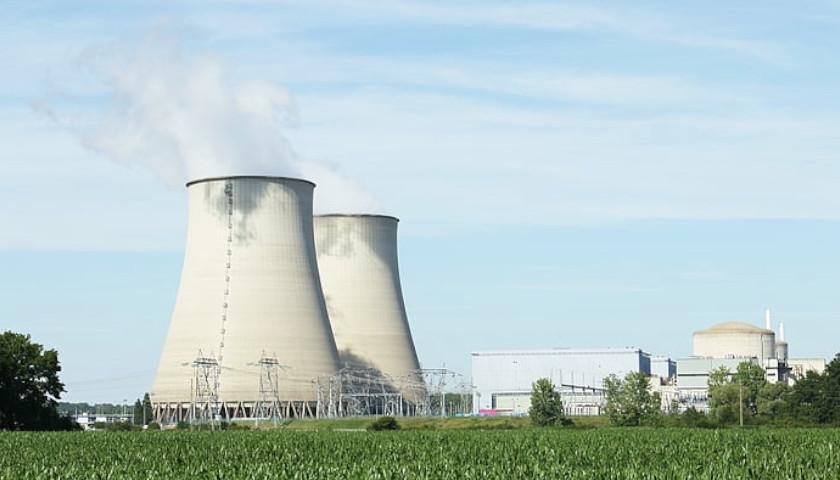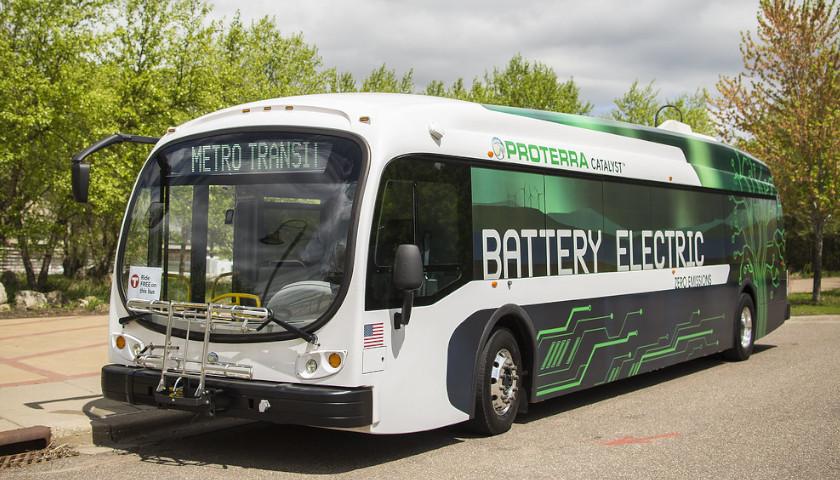If the delusional but dead serious demands coming out of the international climate crisis community are to be believed, and as documented in the earlier two segments of this report, achieving universal energy security in the world will require wind energy capacity to increase by a factor of 60, while solar capacity increases by a factor of 100. The mix between wind and solar can vary, of course, but the required overall increase is indisputable. As noted in Part One of this report, that would be a very best-case scenario, where extraordinary improvements in energy efficiency meant that total energy production worldwide would only have to increase to 1,000 exajoules per year, from an estimated 600 exajoules in 2022.
Read the full storyTag: Carbon
Biden-Favored EV Bus Maker Proterra Goes Bust and Leaves a Trail of Broken and Irreparable Buses
Across the country, towns and cities of various sizes envisioned an electrified public transit system that could shuttle residents with vehicles that produced no carbon-filled exhaust.
Many of those communities purchased buses from Silicon Valley-based Proterra, which was able to produce 550 buses over its 19-year existence before it went bankrupt in August.
Read the full storyEastern States Inching Toward New Regional Climate Pact That Could Cut Carbon Emissions, Raise Gas Prices
A group of Northeast and mid-Atlantic states are inching toward a regional climate pact that’s aimed at reducing emissions and easing traffic congestion, but could ultimately increase prices at the gas pumps.
Modeled on the Regional Greenhouse Gas Initiative, which has reduced emissions from power plants, the Transportation and Climate Initiative would create a cap-and-invest program to drive down emissions from cars and trucks, which contribute to about 40% of regional greenhouse gas emissions scientists say contribute to a warmer planet.
Read the full storyAnalysis: EPA’s Repeal of the Clean Power Plan Falls Short by Allowing the ‘Carbon Endangerment Finding’ to Remain
by Robert Romano The Environmental Protection Agency (EPA) under President Donald Trump has finally rescinded the Obama era Clean Power Plan that sought to end coal as a form of electricity and puts states in the driver’s seat in terms of regulating carbon emissions rates. But because Congress has left the 2009 carbon endangerment finding in place the probability is that carbon emissions will once again be regulated nationally as a harmful pollutant under the Clean Air Act as soon as Democrats are back in power. Per the EPA release on June 19, the Affordable Clean Energy rule “establishes emissions guidelines for states to use when developing plans to limit carbon dioxide (CO2) at their coal-fired power plants. Specifically, ACE identifies heat rate improvements as the best system of emission reduction (BSER) for CO2 from coal-fired power plants, and these improvements can be made at individual facilities. States will have 3 years to submit plans, which is in line with other planning timelines under the Clean Air Act.” The Clean Power Plan, initially proposed in 2014 and finalized in 2015, was designed to reduce carbon emissions by retrofitting existing coal power plants and making the costs of building new ones so onerous that it…
Read the full storyUS Power Sector Has Cut Carbon Emissions by Nearly 30 Percent
by Jason Hopkins A combination of slower electricity demand and a changing fossil fuel industry has led to a 28 percent reduction in the country’s carbon dioxide emissions. Despite President Donald Trump’s ambitious rollback of environmental regulations and attempts to revitalize the coal industry, data indicate the U.S. is reducing its carbon footprint under his administration. The country’s power sector has cut its carbon dioxide emissions by 28 percent since 2005, according to a Monday report from the Energy Information Administration (EIA). The country’s power sector had a total of 1,744 million metric tons of carbon dioxide emissions in 2017, the smallest level seen since 1987. The drop in greenhouse gases are due to two main changes: slower demand growth for electricity, and the decline of coal in lieu of natural gas and subsidy backed renewables. In six of the past 10 years, demand for electricity has decreased. At the same time, natural gas has emerged as a cheaper and more efficient source for energy generation than coal. Natural gas surpassed coal as the main source of electricity generation in 2016. Non-carbon sources of electricity generation have also made inroads in the past decade. Largely fueled by state and…
Read the full story




